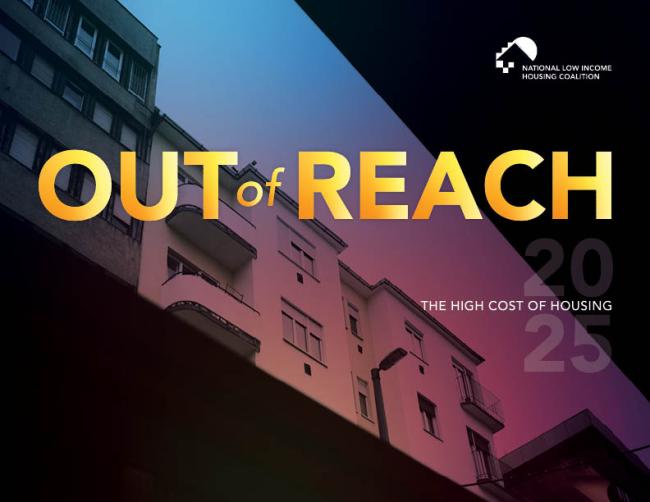Washington, D.C. – Today, the National Low Income Housing Coalition (NLIHC) released its annual report, Out of Reach 2025: The High Cost of Housing. This new report highlights the significant gap between wages and the income necessary to afford housing.

The report defines a “Housing Wage” as the hourly wage a full-time worker must earn to afford a modest rental home without spending more than 30% of their income on housing costs. This year’s Housing Wage is $33.63 for a modest two-bedroom apartment, which is more than four times the federal minimum wage of $7.25 per hour.
“Housing is more than just shelter, it is foundational to well-being and dignity,” said NLIHC President and CEO Renee Willis. “This year’s Out of Reach report shows that, despite economic gains for some, low-income renters continue to face impossible choices between paying rent and meeting basic needs. The report findings also reinforce that cutting federal housing investments would only deepen the housing crisis. Congress must protect and expand housing programs that ensure stability, opportunity, and a pathway out of poverty for millions of renters.”
Key findings from the report include:
- Higher wages alone will not solve the housing affordability crisis. Sixty-four localities have minimum wages that exceed the federal minimum wage or, where applicable, their state minimum wage. However, in each of these areas, the local minimum wage is still insufficient to cover the costs of a one-bedroom or two-bedroom home.
- Nearly half of U.S. renter households are cost-burdened. Approximately 22.4 million renter households experience housing-cost burdens, with 12 million classified as severely cost-burdened. Eighty-seven percent of extremely low-income renters face some level of cost burden, and 75% experience severe cost burden, compared to 49% and 26% of all renters, respectively.
- Federal policies and programs play a crucial role in establishing a robust housing safety net, preventing evictions and homelessness, and reducing housing instability among renters with the lowest incomes. These programs are essential for supporting the construction of new affordable housing, preserving the quality and affordability of existing homes, and bridging the gap between what the lowest-income renters can afford and current market rents.
Generally, while rents have stabilized and even slightly decreased in some housing markets, these minor declines are insufficient to help renters with the lowest or average incomes remain stably housed.
For additional information and to download Out of Reach, visit: http://www.nlihc.org/oor
###